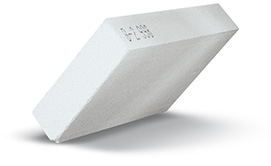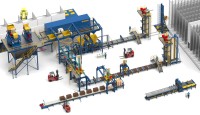 It's a long way from raw materials through the mixture to the finished stone. Many plant components are involved in this process. Only if the system components are matched, can one be assured of a smooth process and economical operation of the block and paver making plant.
Learn about our Concrete block and paver making plants.
It's a long way from raw materials through the mixture to the finished stone. Many plant components are involved in this process. Only if the system components are matched, can one be assured of a smooth process and economical operation of the block and paver making plant.
Learn about our Concrete block and paver making plants.
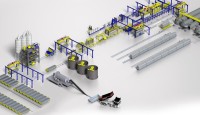 The manufacturing of autoclaved aerated concrete products demands high standards for mixing and dosing of the aggregates, the control of the fermentation process and the control of each production step. Masa's aerated concrete installations are proven advanced technology processes, designed according to customers specific requirements. This approach allows complete solutions to ensure highly efficient, optimised processes resulting in consistent final product quality.
Learn more about our plants for the production of AAC.
The manufacturing of autoclaved aerated concrete products demands high standards for mixing and dosing of the aggregates, the control of the fermentation process and the control of each production step. Masa's aerated concrete installations are proven advanced technology processes, designed according to customers specific requirements. This approach allows complete solutions to ensure highly efficient, optimised processes resulting in consistent final product quality.
Learn more about our plants for the production of AAC.
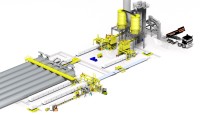 It's a long way from raw materials through the mixture to the finished sand lime bricks. Many plant components are involved in this process. Only if the system components are matched, can one be assured of a smooth process and economical operation of the sand lime brick production plant.
Learn about our Sand lime brick production plants.
It's a long way from raw materials through the mixture to the finished sand lime bricks. Many plant components are involved in this process. Only if the system components are matched, can one be assured of a smooth process and economical operation of the sand lime brick production plant.
Learn about our Sand lime brick production plants.
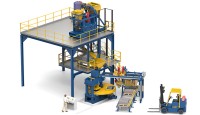 It's a long way from raw materials over mixture to the finished (Kerb)stone. Masa Kerbstone presses were developed to fulfill among other criteria, the special requirements of the "British Standard" kerbstones. This "British Standard" is still a condition in countries of the Middle East and the UK.
Learn about our Kerbstone production plants.
It's a long way from raw materials over mixture to the finished (Kerb)stone. Masa Kerbstone presses were developed to fulfill among other criteria, the special requirements of the "British Standard" kerbstones. This "British Standard" is still a condition in countries of the Middle East and the UK.
Learn about our Kerbstone production plants.
- Assembly & Commissioning
- Masa Lifetime Service
- Masa Support
- Masa Customer training
- Masa Service Team
- Masa Service Cloud
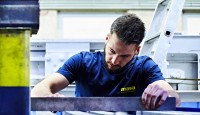 Masa plants and machines are installed and commissioned by our own experienced fitters. Masa relies on qualified personnel, trained in Germany.
Read more about the assembly and commissioning of your production line.
Masa plants and machines are installed and commissioned by our own experienced fitters. Masa relies on qualified personnel, trained in Germany.
Read more about the assembly and commissioning of your production line.
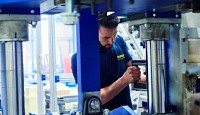 The Masa Lifetime service extends far beyond the actual assembly and commissioning of a plant. Masa can rely on specific know-how and an industry experience of more than 110 years.
Find out more about the wide range of Masa Lifetime services.
The Masa Lifetime service extends far beyond the actual assembly and commissioning of a plant. Masa can rely on specific know-how and an industry experience of more than 110 years.
Find out more about the wide range of Masa Lifetime services.
 Do you need support with your machine? Masa Support scores in both quality and significantly improved accessibility. Whether "first aid" for technical problems, updates, functional expansions of your production plant or technical questions, the know-how provided by Masa Support covers a wide range of services.
Get information now.
Do you need support with your machine? Masa Support scores in both quality and significantly improved accessibility. Whether "first aid" for technical problems, updates, functional expansions of your production plant or technical questions, the know-how provided by Masa Support covers a wide range of services.
Get information now.
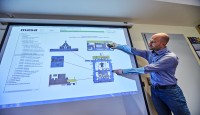 One of the keys to increasing productivity and quality is continuous training of the machine and maintenance personnel.
One of the keys to increasing productivity and quality is continuous training of the machine and maintenance personnel.
The acquired know-how will pay off quickly: You and your employees only know how good a Masa machine or plant actually is, if all functions, tricks and fine adjustments are known.
Learn more about Masa Customer training.
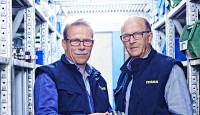 Are you looking for your contact? The Masa Service team introduces itself.
All contact details can be found here.
Are you looking for your contact? The Masa Service team introduces itself.
All contact details can be found here.
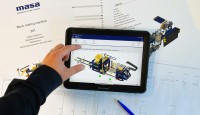 The Masa Service Cloud is the latest product in the family of digital products.
Find out more about this product and its applications.
The Masa Service Cloud is the latest product in the family of digital products.
Find out more about this product and its applications.

